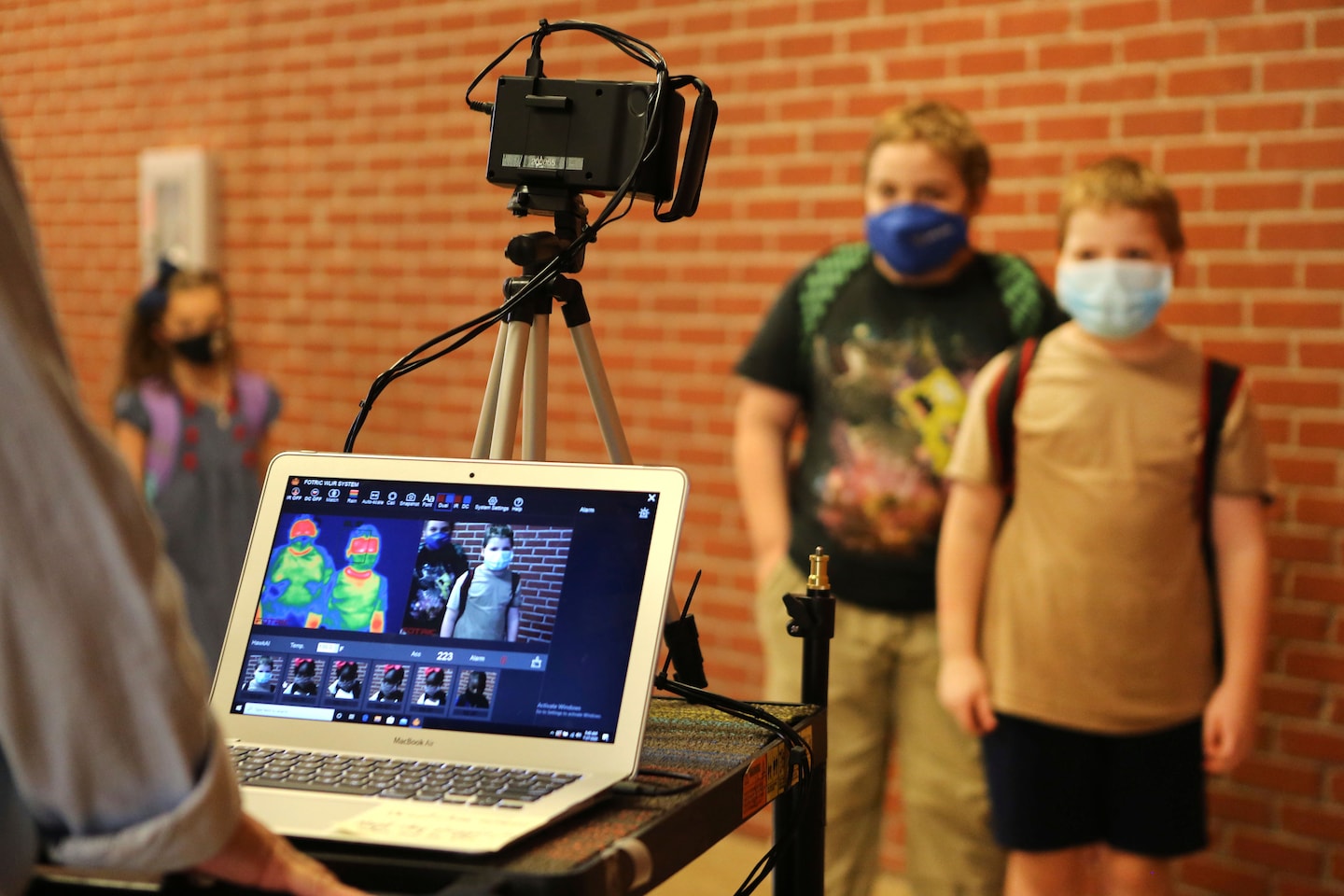Why parents now face an impossible choice

Many large school districts, from Fresno, Calif., to Fairfax County, have already announced they will teach only online this fall. More will likely follow. But let’s say you live in a district that is planning to open, or at least open partially. The homework begins before classes start: What is the infection rate in your community? Is it slowing down or getting worse? How prepared is the district? Do officials have enough space, enough teachers, enough personal protective equipment? Do they actually have a plan?
What can anyone do to safeguard the bus, the lunchroom, the classroom? Test runs at summer camps — outdoors, well-ventilated, small groups — were not encouraging. Israeli schools opened up, and now some are shutting down again as more than 2,000 students, teachers and staff were infected. Watch kids on the playground, carefree and careless: Flights of imagination seldom leave six feet of space between fliers. Has any kindergartner ever socially distanced ever? What about any high school sophomore?
Private Facebook groups throb with uncertainty, as parents test their resolve in a laboratory contaminated with rumors and misinformation. Even the reliable evidence that children younger than 10 are less likely to contract the virus or spread it competes with the posts about teachers writing their wills. And beyond the pressure parents feel from one another, there’s what they feel from their kids, who, even if they shouldn’t have a say in the decision, won’t necessarily stop from trying. Parents are wired to be protective, children invincible — a perfect recipe for family detonation.
The harder question is not what it takes to open a school but what it takes to close one. Will three infected students shutter an elementary school, or 10 or 25? Who gets to decide, and how? Since children are at lower risk, does it take staff and teachers getting sick? When will we be told? How is one even to make judgments? It is almost certain that there will a lot of places that open and then close, perhaps more than once. Major League Baseball, with all the resources and incentives imaginable, didn’t make it a week.
With this level of uncertainty, it is no wonder people are just giving up. But pulling kids out is a luxury many people, especially single parents, don’t have. And even those who have the margin to manage remote learning still have their nightmares. Let your kid fall even further behind in math … or risk losing some lung capacity. Dip into the depleted college fund to hire a private tutor? Whom should you trust in your parent pod, if you share supervision so that at least some of you can work on some days, praying the other families are as stringent about safety as you are? Do you include any families of essential workers, who need the support most? This is advanced math, layered with fear and shot through with questions of fairness.
Remember when work-life balance was a thing? There’s no balancing being employee, parent, teacher, spouse, tutor, occupational therapist and IT consultant. Many women suffer a “motherhood wage penalty”; now the question, for any parent who can afford the thought, is not part time or flex time. It’s “Do I quit?”
More multivariable calculus: One mother I know does hers this way: “For our family’s mental health, they must go back.” But as the infection reports roll in, the resolution thins. “I can’t get past the guilt: guilt if I’m not letting my kids connect with other kids, vs. guilt that I send them and they get sick and have, my God, long-term health consequences. So now I’m thinking it’s not worth it to send them.”
Then you face the aggregate cost of staying home. A McKinsey study finds a typical student could lose seven months, with Hispanic and black students losing nine and 10 months of progress, respectively, if in-school instruction does not fully resume before January 2021. And that doesn’t even measure the emotional and social cost of isolation, the lost confidence and purpose kids gain from their passion for a sport or music or art. Parents dread having to choose one child’s needs over another because of risks they can neither avoid nor fully calculate.
The only relief from the anxiety is the anger. Maybe you can’t stop a plague; but there was plenty that leaders at every level could have been doing since last March, when schools shut down, to increase the odds they could safely reopen. It should not fall to parents to do the arbitrage. Teachers and staff deserve better protection, and watching other countries send their kids back to class because the virus is tamed is enough to send Americans around the bend.
The heart of education is the ability to learn from your mistakes. That’s a test too many leaders have failed, and now it falls to families to correct.
Read more:






